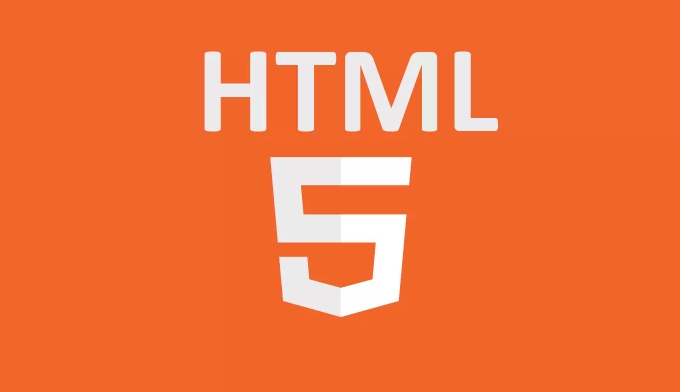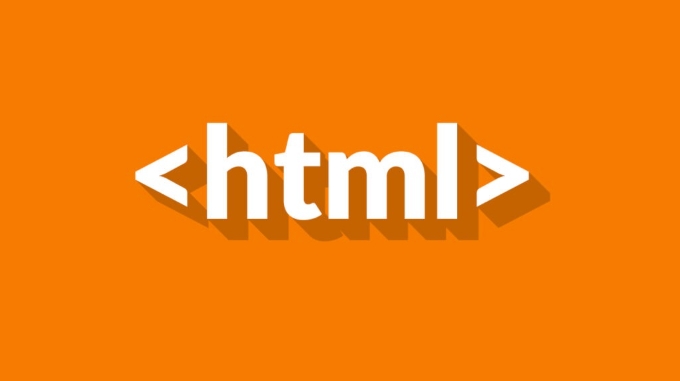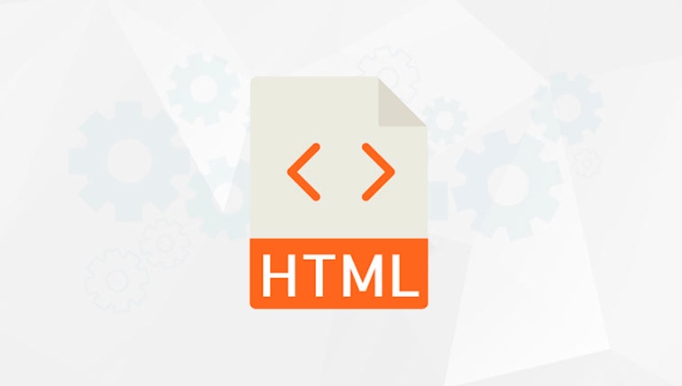The core method of implementing responsive images in HTML includes the following steps: 1. Use max-width: 100% to adapt the image to the container to ensure that the image is scaled to scale and does not overflow; 2. Use the srcset and sizes attributes to enable the browser to load pictures of the appropriate size according to the screen width, improving loading efficiency; 3. Pay attention to the original size and format of the image to avoid excessively large images being displayed, and use modern formats such as WebP to optimize loading performance; 4. Solve common problems in layout, such as undefined container size, unadaptive height, and blurred high-resolution screen display, clear sizes should be set and srcset should be used with high-definition pictures. These practices jointly ensure the good display and performance of pictures on various devices.

The core of implementing responsive images in HTML is to enable images to automatically resize and sharpen their size according to screen size. Simply put, it is to use CSS to control the size behavior of the image, and at the same time combine the img tag attributes of HTML to optimize the display effect.

1. Use max-width: 100% to make the image adaptive container
This is the most basic and critical step. By setting max-width: 100% for the image, it can be automatically scaled on different devices without exceeding its container width.
img {
max-width: 100%;
height: auto;
}After this setting, no matter what width the picture is placed in a box, it can maintain scale and avoid deformation or overflow.

2. Use srcset and sizes attributes to improve loading efficiency
If you rely solely on CSS, it may cause small screen devices to load large images, wasting traffic. At this time, you can use the HTML srcset and sizes attributes:
<img src="/static/imghw/default1.png" data-src="small.jpg" class="lazy" srcset="small.jpg 480w, medium.jpg 800w, large.jpg 1200w" sizes="(max-width: 600px) 480px, (max-width: 1000px) 800px, 1200px" alt="Example Picture">
-
srcset: Tells the browser what pictures are available and their width. -
sizes: Define how wide the image will be displayed under different screen widths.
In this way, the browser can select the most suitable size of the picture to load according to the current screen, which not only ensures clarity but also saves bandwidth.

3. Pay attention to the original size and format of the picture
Sometimes even if the responsive style is written, the image still looks blurry or loads slowly. The problem may lie in the image itself:
- Don’t use too large images to reduce the display . For example, if you use 5000x3000 pictures to display them as 300x200, the loading time will become longer.
- Using modern formats such as WebP , it is smaller and clearer than JPEG/PNG.
- To compress images in advance , you can use tools such as TinyPNG, ImageOptim, etc.
Although these details are inconspicuous, they have a great impact on performance and experience.
4. Frequently Asked Questions about Responsive Images in Layout
Sometimes you will find that the images are not aligned or deformed on certain devices, which is usually caused by the following reasons:
- The container has no clear width or height set
- Forgot to set
height: autocauses image proportionality to be out of order - No clarity issues under high resolution screens (Retina) were considered
The solution is also very simple:
- Picture containers should be clearly sized
- Keep
height: autoavoids stretching deformation - For high-definition screens, higher resolution pictures can be used to match
srcset
Basically these are the methods. Responsive images are not complicated, but they are easy to ignore some details, especially load optimization and image format processing. Taking all these points into consideration will make the pictures perform better on various devices.
The above is the detailed content of How to make a responsive image in HTML?. For more information, please follow other related articles on the PHP Chinese website!

Hot AI Tools

Undress AI Tool
Undress images for free

Undresser.AI Undress
AI-powered app for creating realistic nude photos

AI Clothes Remover
Online AI tool for removing clothes from photos.

Clothoff.io
AI clothes remover

Video Face Swap
Swap faces in any video effortlessly with our completely free AI face swap tool!

Hot Article

Hot Tools

Notepad++7.3.1
Easy-to-use and free code editor

SublimeText3 Chinese version
Chinese version, very easy to use

Zend Studio 13.0.1
Powerful PHP integrated development environment

Dreamweaver CS6
Visual web development tools

SublimeText3 Mac version
God-level code editing software (SublimeText3)

Hot Topics
 How can CSS be used to implement dark mode theming on a website?
Jun 19, 2025 am 12:51 AM
How can CSS be used to implement dark mode theming on a website?
Jun 19, 2025 am 12:51 AM
ToimplementdarkmodeinCSSeffectively,useCSSvariablesforthemecolors,detectsystempreferenceswithprefers-color-scheme,addamanualtogglebutton,andhandleimagesandbackgroundsthoughtfully.1.DefineCSSvariablesforlightanddarkthemestomanagecolorsefficiently.2.Us
 Can you explain the difference between em, rem, px, and viewport units (vh, vw)?
Jun 19, 2025 am 12:51 AM
Can you explain the difference between em, rem, px, and viewport units (vh, vw)?
Jun 19, 2025 am 12:51 AM
The topic differencebetweenem, Rem, PX, andViewportunits (VH, VW) LiesintheirreFerencepoint: PXISFixedandbasedonpixelvalues, emissrelative EtothefontsizeFheelementoritsparent, Remisrelelatotherootfontsize, AndVH/VwarebaseDontheviewporttimensions.1.PXoffersprecis
 What are the key differences between inline, block, inline-block, and flex display values?
Jun 20, 2025 am 01:01 AM
What are the key differences between inline, block, inline-block, and flex display values?
Jun 20, 2025 am 01:01 AM
Choosing the correct display value in CSS is crucial because it controls the behavior of elements in the layout. 1.inline: Make elements flow like text, without occupying a single line, and cannot directly set width and height, suitable for elements in text, such as; 2.block: Make elements exclusively occupy one line and occupy all width, can set width and height and inner and outer margins, suitable for structured elements, such as; 3.inline-block: has both block characteristics and inline layout, can set size but still display in the same line, suitable for horizontal layouts that require consistent spacing; 4.flex: Modern layout mode, suitable for containers, easy to achieve alignment and distribution through justify-content, align-items and other attributes, yes
 What are CSS Houdini APIs, and how do they allow developers to extend CSS itself?
Jun 19, 2025 am 12:52 AM
What are CSS Houdini APIs, and how do they allow developers to extend CSS itself?
Jun 19, 2025 am 12:52 AM
CSSHoudini is a set of APIs that allow developers to directly manipulate and extend the browser's style processing flow through JavaScript. 1. PaintWorklet controls element drawing; 2. LayoutWorklet custom layout logic; 3. AnimationWorklet implements high-performance animation; 4. Parser&TypedOM efficiently operates CSS properties; 5. Properties&ValuesAPI registers custom properties; 6. FontMetricsAPI obtains font information. It allows developers to expand CSS in unprecedented ways, achieve effects such as wave backgrounds, and have good performance and flexibility
 What is the significance of Vue's reactivity transform (experimental, then removed) and its goals?
Jun 20, 2025 am 01:01 AM
What is the significance of Vue's reactivity transform (experimental, then removed) and its goals?
Jun 20, 2025 am 01:01 AM
ReactivitytransforminVue3aimedtosimplifyhandlingreactivedatabyautomaticallytrackingandmanagingreactivitywithoutrequiringmanualref()or.valueusage.Itsoughttoreduceboilerplateandimprovecodereadabilitybytreatingvariableslikeletandconstasautomaticallyreac
 How can CSS gradients (linear-gradient, radial-gradient) be used to create rich backgrounds?
Jun 21, 2025 am 01:05 AM
How can CSS gradients (linear-gradient, radial-gradient) be used to create rich backgrounds?
Jun 21, 2025 am 01:05 AM
CSSgradientsenhancebackgroundswithdepthandvisualappeal.1.Startwithlineargradientsforsmoothcolortransitionsalongaline,specifyingdirectionandcolorstops.2.Useradialgradientsforcirculareffects,adjustingshapeandcenterposition.3.Layermultiplegradientstocre
 What are the challenges and solutions for maintaining CSS in large-scale applications?
Jun 14, 2025 am 12:15 AM
What are the challenges and solutions for maintaining CSS in large-scale applications?
Jun 14, 2025 am 12:15 AM
The key to maintaining CSS for large applications is organizational structure, naming specifications, and tool assistance. First, adopt component management, split styles and implement local scopes to avoid conflicts; second, unify naming specifications such as BEM, SMACSS or namespace prefixes to improve maintainability; third, use PostCSS, stylelint and other tools to achieve automated processing and code quality control. Although these methods are not complicated, they require teamwork and continuous maintenance to be effectively implemented.
 How can CSS be used to create print-specific stylesheets?
Jun 14, 2025 am 12:16 AM
How can CSS be used to create print-specific stylesheets?
Jun 14, 2025 am 12:16 AM
Creating print-specific stylesheets using CSS ensures that web pages are effective on the screen and when printing. First, use the @mediaprint rule to define styles that only take effect when printing, such as hiding the navigation bar, footer and sidebar; second, you can link a separate print style sheet print.css to keep style maintenance clearer; finally optimize readability and simplicity, such as removing background colors, using serif fonts, displaying link URLs, and adjusting the layout to adapt to paper characteristics.






